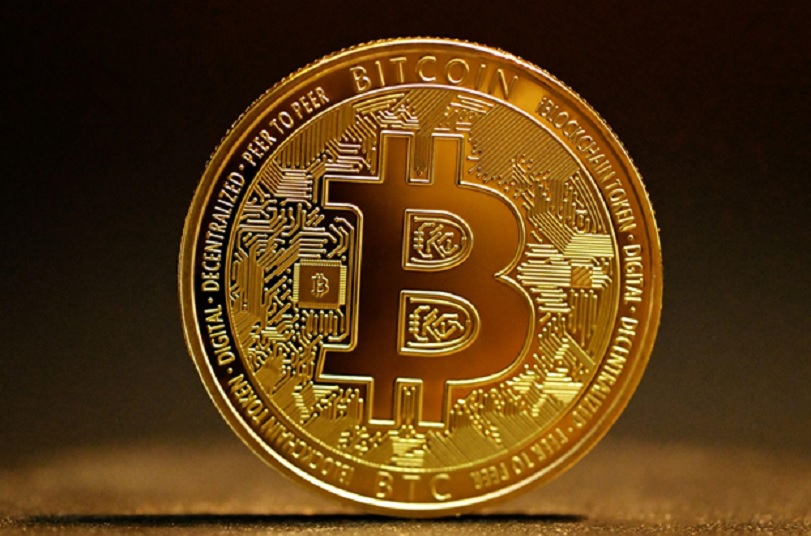Economy
The Economics of Bitcoin: Supply, Demand, and Market Dynamics

Bitcoin, the pioneering cryptocurrency, has reshaped the monetary landscape with its unique characteristics and decentralized nature. Understanding the economics of Bitcoin includes delving into the interaction of delivery, demand, and marketplace dynamics that power its value and affect its adoption. This article explores those key elements to provide a comprehensive evaluation of Bitcoin’s economic framework.
The Basics of Bitcoin
Bitcoin was brought in 2009 by way of an anonymous entity called Satoshi Nakamoto. It operates on a decentralized ledger referred to as the blockchain, which statistics all transactions throughout a network of computers. This system removes the want for intermediaries, including banks, Stock Blast Pro, and gives transparency and security.
Supply: The Finite Nature of Bitcoin
One of Bitcoin’s maximum special capabilities is its limited delivery. Unlike conventional fiat currencies, which important banks can print at will, Bitcoin’s delivery is capped at 21 million cash. This scarcity is embedded in its code and performs a crucial function in its economic model.
- Fixed Supply: Bitcoin’s finite delivery guarantees that it cannot be devalued through inflation, making it a deflationary asset.
- Mining: New bitcoins are delivered into movement through a manner known as mining, where effective computer systems solve complicated mathematical issues. The reward for mining halves approximately every 4 years in an occasion known as the halving, decreasing the charge at which new bitcoins are created.
- Predictable Issuance: The predictable nature of Bitcoin’s issuance schedule lets market participants expect supply adjustments, contributing to its attraction as a shop of price.
Demand: Factors Influencing Bitcoin’s Popularity
The demand for Bitcoin is motivated by a selection of things, which includes its application, investor hobby, and macroeconomic conditions.
- Store of Value: Many investors view Bitcoin as “digital gold” because of its scarcity and capability to hedge against inflation and monetary uncertainty.
- Medium of Exchange: While Bitcoin’s adoption as a medium of change continues to be growing, it’s miles general with the aid of a developing range of traders and carrier carriers internationally.
- Speculative Investment: The unstable nature of Bitcoin attracts speculative investors seeking excessive returns, using call for and influencing its rate.
- Technological Adoption: Advances in blockchain technology and increasing recognition of cryptocurrencies make contributions to Bitcoin’s call for.
- Regulatory Environment: The regulatory panorama surrounding Bitcoin can impact calls for, as favourable guidelines inspire adoption even as restrictive regulations can dampen hobby.
Market Dynamics: Price Volatility and Influences
Bitcoin’s marketplace dynamics are characterized by good-sized charge volatility, encouraged by diverse internal and external factors.
- Market Sentiment: Public belief and sentiment play a large function in Bitcoin’s rate movements. News, social media developments, and influential figures can cause rapid price adjustments.
- Liquidity: The liquidity of Bitcoin markets affects its rate stability. Higher liquidity has a tendency to reduce volatility, at the same time as lower liquidity can cause sharp price swings.
- Market Manipulation: Despite efforts to alter, Bitcoin markets can be liable to manipulation, consisting of pump-and-unload schemes, which can create artificial rate movements.
- Institutional Involvement: The access of institutional traders, consisting of hedge price range and publicly traded organizations, into the Bitcoin market has improved its legitimacy and inspired charge dynamics.
Bitcoin’s Role inside the Broader Cryptocurrency Ecosystem
Bitcoin’s economic standards and marketplace conduct additionally have an effect on different cryptocurrencies. For instance, Litecoin, regularly known as the silver to Bitcoin’s gold, stocks lots of Bitcoin’s characteristics but with a few differences in technology and market dynamics. Users may shop their Litecoin in a secure Litecoin Wallet which gives comparable functionalities to Bitcoin wallets, making sure safe and obvious transactions.
The Future of Bitcoin’s Economics
As Bitcoin continues to mature, its monetary framework will evolve, prompted by technological improvements, regulatory tendencies, and changing market conditions.
- Scalability Solutions: Innovations including the Lightning Network intend to improve Bitcoin’s scalability and transaction pace, enhancing its application as a medium of trade.
- Regulatory Clarity: Greater regulatory clarity can foster a stronger and steadier environment for Bitcoin, encouraging broader adoption.
- Institutional Adoption: Continued hobby and investment from institutional players can offer liquidity and balance, potentially decreasing volatility.
- Global Economic Trends: Macroeconomic elements, inclusive of inflation, geopolitical tensions, and financial crises, can affect Bitcoin’s call for a hedge towards traditional monetary structures.
Understanding Bitcoin’s Economic Impact
Understanding the economics of Bitcoin requires a nuanced appreciation of its delivery constraints, call for drivers and market dynamics. Its precise characteristics as a scarce, decentralized virtual asset role it as a current force in the monetary world. As the cryptocurrency landscape evolves, Bitcoin’s financial concepts will be preserved to form its function in the worldwide economy, supplying possibilities and challenges for buyers, regulators, and clients alike. The ongoing speak among innovation and regulation can be crucial in determining Bitcoin’s future impact.
Economy
LCCI Raises Eyebrow Over N15.52trn Debt Servicing Plan in 2026 Budget

By Adedapo Adesanya
The Lagos Chamber of Commerce and Industry (LCCI) has noted that the N15.52 trillion allocation to debt servicing in the 2026 budget remains a significant fiscal burden.
LCCI Director-General, Mrs Chinyere Almona, said this on Tuesday in Lagos via a statement in reaction to the nation’s 2026 budget of N58.18 trillion, hinging the success of the 2026 budget on execution discipline, capital efficiency, and sustained support for productive sectors.
She noted that the budget was a timely shift from macroeconomic stabilisation to growth acceleration, reflecting growing confidence in the economy.
She lauded its emphasis on production-oriented spending, with capital expenditure of N26.08 trillion, representing 45 per cent of total outlays, and significantly outweighing non-debt recurrent expenditure of N15.25 trillion.
According to Mrs Almona, this composition supports infrastructure development, industrial expansion, and productivity growth.
However, she explained that the N15.52 trillion allocation to debt servicing underscored the need for stricter borrowing discipline, enhanced revenue efficiency, and expanded public-private partnerships to safeguard investments that promote growth.
She added that a further review of the 2026 budget revealed relatively optimistic macroeconomic assumptions that may pose fiscal risks.
“The oil price benchmark of $64.85 per barrel, although lower than the $75.00 benchmark in the 2025 budget, appears optimistic when compared with the 2025 average price of about $69.60 per barrel and current prices around $60 per barrel.
“This raises downside risks to oil revenue, especially since 35.6 per cent of the total projected revenue is expected to come from oil receipts.
“Similarly, the oil production benchmark of 1.84 million barrels per day is significantly higher than the current level of approximately 1.49 million barrels per day.
“Achieving this may be challenging without substantial improvements in security, infrastructure integrity, and sector investment,” she said.
Mrs Almona said the exchange rate assumption of N1,512 to the Dollar, compared with N1,500 in the 2025 budget and about N1,446 per Dollar at the end of November, suggests expectations of a mild depreciation.
She said while this may support Naira-denominated revenue, it also increases the cost of imports, debt servicing, and inflation management, with broader macroeconomic implications.
The LCCI DG added that the inflation projection of 16.5 per cent in 2026, up from 15.8 per cent in the 2025 budget and a current rate of about 14.45 per cent, appeared optimistic, particularly in a pre-election year.
She also expressed concern about Nigeria’s historically weak budget implementation capacity, likely to be further strained by the combined operation of multiple budget cycles within a single year.
Looking ahead, Mrs Almona identified agriculture and agro-processing, manufacturing, infrastructure, energy, and human capital development as key drivers of growth in 2026.
She said that unlocking these sectors would require decisive execution—scaling irrigation and agro-value chains, reducing power and logistics costs for manufacturers, and aligning education and skills development with private-sector needs.
The LCCI head stressed the need to resolve issues surrounding the Naira for crude, increase the supply of oil to local refineries to boost local refining capacity and conserve the substantial foreign exchange used for fuel imports.
“Overall, the 2026 Budget presents a credible opportunity for Nigeria to transition from recovery to expansion.
“Its success will depend less on the size of allocations and more on execution discipline, capital efficiency, and sustained support for productive sectors.
Economy
Customs Street Chalks up 0.12% on Santa Claus Rally

By Dipo Olowookere
The Nigerian Exchange (NGX) Limited witnessed Santa Claus rally on Wednesday after it closed higher by 0.12 per cent.
Strong demand for Nigerian stocks lifted the All-Share Index (ASI) by 185.70 points during the pre-Christmas trading session to 153,539.83 points from 153,354.13 points.
In the same vein, the market capitalisation expanded at midweek by N118 billion to N97.890 trillion from the preceding day’s N97.772 trillion.
Investor sentiment on Customs Street remained bullish after closing with 36 appreciating equities and 22 depreciating equities, indicating a positive market breadth index.
Guinness Nigeria chalked up 9.98 per cent to trade at N318.60, Austin Laz improved by 9.97 per cent to N3.20, International Breweries expanded by 9.85 per cent to N14.50, Transcorp Hotels rose by 9.83 per cent to N170.90, and Aluminium Extrusion grew by 9.73 per cent to N16.35.
On the flip side, Legend Internet lost 9.26 per cent to close at N4.90, AXA Mansard shrank by 7.14 per cent to N13.00, Jaiz Bank declined by 5.45 per cent to N4.51, MTN Nigeria weakened by 5.21 per cent to N504.00, and NEM Insurance crashed by 4.74 per cent to N24.10.
Yesterday, a total of 1.8 billion shares valued at N30.1 billion exchanged hands in 19,372 deals versus the 677.4 billion shares worth N20.8 billion traded in 27,589 deals in the previous session, implying a slump in the number of deals by 29.78 per cent, and a surge in the trading volume and value by 165.72 per cent and 44.71 per cent apiece.
Abbey Mortgage Bank was the most active equity for the day after it sold 1.1 billion units worth N7.1 billion, Sterling Holdings traded 127.1 million units valued at N895.9 million, Custodian Investment exchanged 115.0 million units for N4.5 billion, First Holdco transacted 40.9 million units valued at N2.2 billion, and Access Holdings traded 38.2 million units worth N783.3 million.
Economy
Yuletide: Rite Foods Reiterates Commitment to Quality, Innovation

By Adedapo Adesanya
Nigerian food and beverage company, Rite Foods Limited, has extended warm Yuletide greetings to Nigerians as families and communities worldwide come together to celebrate the Christmas season and usher in a new year filled with hope and renewed possibilities.
In a statement, Rite Foods encouraged consumers to savour these special occasions with its wide range of quality brands, including the 13 variants of Bigi Carbonated Soft Drinks, premium Bigi Table Water, Sosa Fruit Drink in its refreshing flavours, the Fearless Energy Drink, and its tasty sausage rolls — all produced in a world-class facility with modern technology and global best practices.
Speaking on the season, the Managing Director of Rite Foods Limited, Mr Seleem Adegunwa, said the company remains deeply committed to enriching the lives of consumers beyond refreshment. According to him, the Yuletide period underscores the values of generosity, unity, and gratitude, which resonate strongly with the company’s philosophy.
“Christmas is a season that reminds us of the importance of giving, togetherness, and gratitude. At Rite Foods, we are thankful for the continued trust of Nigerians in our brands. This season strengthens our resolve to consistently deliver quality products that bring joy to everyday moments while contributing positively to society,” Mr Adegunwa stated.
He noted that the company’s steady progress in brand acceptance, operational excellence, and responsible business practices reflects a culture of continuous improvement, innovation, and responsiveness to consumer needs. These efforts, he said, have further strengthened Rite Foods’ position as a proudly Nigerian brand with growing relevance and impact across the country.
Mr Adegunwa reaffirmed that Rite Foods will continue to invest in research and development, efficient production processes, and initiatives that support communities, while maintaining quality standards across its product portfolio.
“As the year comes to a close, Rite Foods Limited wishes Nigerians a joyful Christmas celebration and a prosperous New Year filled with peace, progress, and shared success.”
-

 Feature/OPED6 years ago
Feature/OPED6 years agoDavos was Different this year
-
Travel/Tourism9 years ago
Lagos Seals Western Lodge Hotel In Ikorodu
-

 Showbiz3 years ago
Showbiz3 years agoEstranged Lover Releases Videos of Empress Njamah Bathing
-

 Banking8 years ago
Banking8 years agoSort Codes of GTBank Branches in Nigeria
-

 Economy3 years ago
Economy3 years agoSubsidy Removal: CNG at N130 Per Litre Cheaper Than Petrol—IPMAN
-

 Banking3 years ago
Banking3 years agoFirst Bank Announces Planned Downtime
-

 Banking3 years ago
Banking3 years agoSort Codes of UBA Branches in Nigeria
-

 Sports3 years ago
Sports3 years agoHighest Paid Nigerian Footballer – How Much Do Nigerian Footballers Earn





















